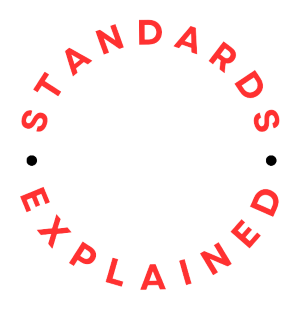ISO 22301:2019 Security and resilience — Business continuity management systems — Requirements is the international standard that provides a framework for establishing, implementing, maintaining, and continually improving a business continuity management system. It provides a framework for organizations to plan, establish, implement, operate, monitor, review, maintain, and continually improve a documented management system to protect against, reduce the likelihood of, and ensure recovery from disruptive incidents.
The standard enables the organization to enhance its resilience against various unforeseen disruptions, ensuring continuity of operations and services. It helps in identifying risks, preparing for emergencies, and improving recovery time.
What does it cover?
| Introduction |
| 1 Scope |
| 2 Normative references |
| 3 Terms and definitions |
| 4 Context of the organization |
| 4.1 Understanding the organization and its context |
| 4.2 Understanding the needs and expectations of interested parties |
| 4.3 Determining the scope of the business continuity management system |
| 4.4 Business continuity management system |
| 5 Leadership |
| 5.1 Leadership and commitment |
| 5.2 Policy |
| 5.3 Roles, responsibilities and authorities |
| 6 Planning |
| 6.1 Actions to address risks and opportunities |
| 6.2 Business continuity objectives and planning to achieve them |
| 6.3 Planning changes to the business continuity management system |
| 7 Support |
| 7.1 Resources |
| 7.2 Competence |
| 7.3 Awareness |
| 7.4 Communication |
| 7.5 Documented information |
| 8 Operation |
| 8.1 Operational planning and control |
| 8.2 Business impact analysis and risk assessment |
| 8.3 Business continuity strategies and solutions |
| 8.4 Business continuity plans and procedures |
| 8.5 Exercise programme |
| 8.6 Evaluation of business continuity documentation and capabilities |
| 9 Performance evaluation |
| 9.1 Monitoring, measurement, analysis and evaluation |
| 9.2 Internal audit |
| 9.3 Management review |
| 10 Improvement |
| 10.1 Nonconformity and corrective action |
| 10.2 Continual improvement |
Implementing ISO 22301
Implementing a Business Continuity Management System (BCMS) in an organization in conformity with ISO 22301 involves several key steps.
Leadership and Commitment
- Obtain leadership commitment and support for the implementation of the BCMS.
- Establish a clear policy and objectives for business continuity.
Scope and Context
- Define the scope of the BCMS, including the boundaries and applicability.
- Understand the external and internal context of the organization and how it can affect business continuity.
Stakeholder Engagement
Identify and engage relevant stakeholders, considering their needs and expectations in relation to business continuity.
Business Continuity Management System Planning
Develop a detailed plan for implementing the BCMS, considering resources, roles, responsibilities, and timelines.
Risk Assessment and Business Impact Analysis
- Conduct a risk assessment to identify and assess potential disruptions.
- Perform a business impact analysis to understand the consequences of disruptions on the organization.
Risk Treatment and Control Measures
- Develop strategies and control measures to treat identified risks.
- Implement decisions and actions to mitigate the impact of disruptions and enhance organizational resilience.
Business Continuity Policy and Objectives
- Establish a business continuity policy that aligns with the organization’s objectives.
- Set measurable objectives that support the policy.
Organizational Structure, Roles and Responsibilities
- Define the organizational structure for business continuity.
- Allocate roles and responsibilities to ensure effective implementation and maintenance of the BCMS.
Competence and Training
- Identify the competencies required for personnel involved in business continuity.
- Develop and implement training programs to ensure personnel have the necessary skills.
Communication
- Establish effective communication processes within the organization and with external stakeholders.
- Ensure that relevant information is shared promptly during disruptions.
Documentation and Information Management
- Develop and maintain documentation that supports the BCMS.
- Implement information management processes to ensure data integrity and accessibility.
Business Continuity Plans
- Develop and document business continuity plans that outline procedures to be followed in the event of disruptions.
- Ensure that plans are regularly reviewed and updated.
Exercising and Testing
- Conduct regular exercises and tests to evaluate the effectiveness of business continuity plans.
- Identify areas for improvement based on exercise outcomes.
Performance Evaluation
- Establish key performance indicators (KPIs) to measure the performance of the BCMS.
- Monitor and evaluate performance against established KPIs.
Continual Improvement
- Implement processes for continual improvement of the BCMS.
- Conduct regular audits and reviews to identify opportunities for improvement.
Legal and Other Requirements
Identify and ensure compliance with relevant legal and other requirements related to business continuity.
Incident Response and Management
Establish an incident response and management framework to ensure a coordinated and effective response to disruptions.
Crisis Communication
Develop a crisis communication plan to ensure timely and accurate communication during crises.
Documentation and Record Keeping
Establish processes for document control and record keeping to demonstrate compliance with the standard’s requirements.
External Audits and Certification
Prepare for and undergo external audits by certification bodies, if seeking ISO 22301 certification.
Some further words of advice…
Remember, the implementation of a BCMS is an ongoing process, and organizations should continually monitor, evaluate, and improve their systems to ensure they remain effective and aligned with the organization’s business continuity objectives.
ISO 22301 can be purchased through the ISO.org website.














Comments (0)